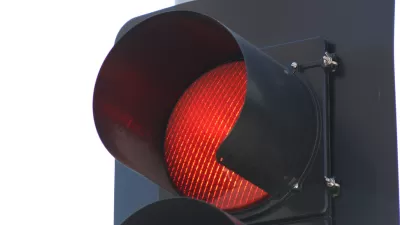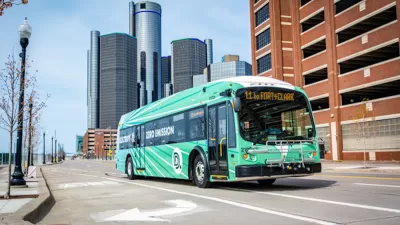Certain intersections stand to gain from losing their traffic lights. According to this study, cities can save money and improve safety by uninstalling signals in low-traffic zones.

New research from Wayne State University extols the advantages of removing unnecessary traffic lights. The researchers studied a sample of 100 signals across Detroit. Eric Jaffe writes, "Extrapolating those findings to all the lights deemed eligible for removal (1,021), [researchers] Schrader and Hummer concluded that Detroit could remove 460 signals, or 30 percent of its total inventory."
While it is true that depopulated Detroit suffers from a glut of seldom-used roadways, every city has its share of low-traffic intersections. The study provides four reasons that can justify signal removal. They include:
- Removing a single traffic light can save up to $8,000 per year in operation and maintenance costs.
- Signals can impede traffic flow as drivers wait alone at red lights.
- Swapping signals for stop signs can improve driver concentration.
- City taxpayers unfairly subsidize the travel of nonresidents by paying for the traffic lights they use commuting to suburbs.
FULL STORY: 4 Reasons to Remove Traffic Lights in the Era of Peak Driving

Maui's Vacation Rental Debate Turns Ugly
Verbal attacks, misinformation campaigns and fistfights plague a high-stakes debate to convert thousands of vacation rentals into long-term housing.

Planetizen Federal Action Tracker
A weekly monitor of how Trump’s orders and actions are impacting planners and planning in America.

San Francisco Suspends Traffic Calming Amidst Record Deaths
Citing “a challenging fiscal landscape,” the city will cease the program on the heels of 42 traffic deaths, including 24 pedestrians.

Defunct Pittsburgh Power Plant to Become Residential Tower
A decommissioned steam heat plant will be redeveloped into almost 100 affordable housing units.

Trump Prompts Restructuring of Transportation Research Board in “Unprecedented Overreach”
The TRB has eliminated more than half of its committees including those focused on climate, equity, and cities.

Amtrak Rolls Out New Orleans to Alabama “Mardi Gras” Train
The new service will operate morning and evening departures between Mobile and New Orleans.
Urban Design for Planners 1: Software Tools
This six-course series explores essential urban design concepts using open source software and equips planners with the tools they need to participate fully in the urban design process.
Planning for Universal Design
Learn the tools for implementing Universal Design in planning regulations.
Heyer Gruel & Associates PA
JM Goldson LLC
Custer County Colorado
City of Camden Redevelopment Agency
City of Astoria
Transportation Research & Education Center (TREC) at Portland State University
Jefferson Parish Government
Camden Redevelopment Agency
City of Claremont





























